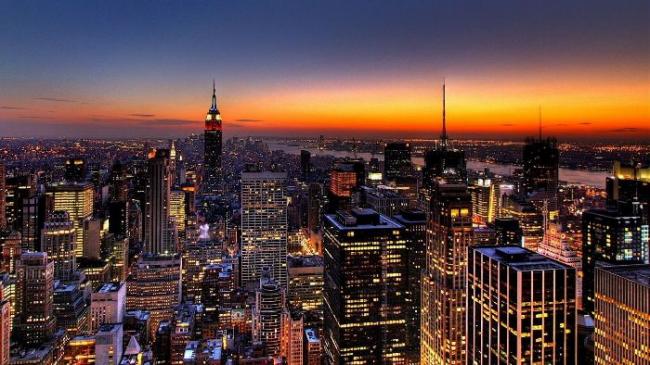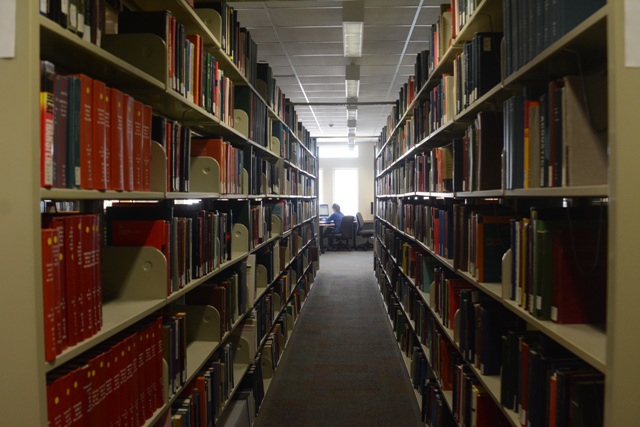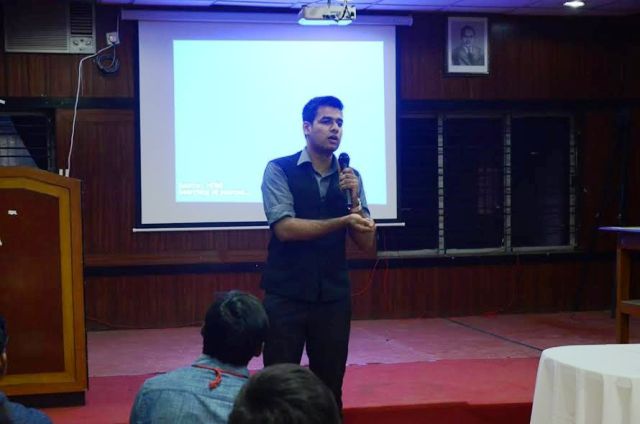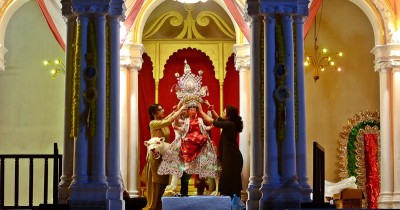
An American dream in flux
After living with his parents for 24 years, Sai Kumar Kovouri decided to give up his life in India for a chance at the American dream. His plan? Get a master’s degree in computer science at the University of Missouri, then hopefully land a great tech job in California.
Now he worries a drastic change in the American political climate could derail his dreams.
Since President Donald Trump took office this year, Indian tech students in America -- and Indians at home hoping to join them -- are worrying new “America First” immigration policies may affect their futures.
“I haven’t planned what I’m going to do in two years after my graduation, because the situation here is not like before,” Kovouri said. “And even employers are not coming forward to give us jobs. I’m completely confused right now.”
In order to work in the United States, educated foreigners must get a type of temporary work visa called an H-1B. This has long been a ticket to America for Indian students. Indian nationals working in the tech sector are the largest recipients; almost 70 percent of H-1B visas were granted to Indians in 2015, according to estimates by Bloomberg.
But on April 18, Trump signed a “Buy American, Hire American” executive order that promises to switch these visas from a random lottery system to one that gives preference to those with the highest level of skills or the highest pay. The order says it will “protect the interest of the United States workers in the administration of our immigration system…”
It’s unclear exactly who qualifies as a high-skilled worker under the order. But no doubt it will be harder for foreigners to find jobs because employers will have to prove they can’t find Americans with equivalent sets of skills.
Daniel Costa, director of immigration law and policy research at the Economic Policy Institute, said he thinks the Trump administration will prioritize visas based on the highest wage, but doesn't know if the type or location of a job will be considered.
“Taken into context of everything that the Trump administration has said and done, in terms of how they criminalized immigrants, it is hard for me to believe that they will do anything” that helps foreign workers over the long run, Costa said.
-1498671723.jpg) Sai Kumar Kovouri (left) and Rajesh Raghavan Balajiveeraragavan are discussing about their assignments in a study room in the University of Missouri, Columbia, Mo on Wednesday, April 19, 2017. Most of their work are finished on laptops.
Sai Kumar Kovouri (left) and Rajesh Raghavan Balajiveeraragavan are discussing about their assignments in a study room in the University of Missouri, Columbia, Mo on Wednesday, April 19, 2017. Most of their work are finished on laptops.
Ticket to an American job
Each year, the U.S. gives out out around 65,000 work visas.
The H-1B program was designed as a transitional stage between temporary employment and permanent residency. An employer may chose to apply for a green card for the worker, but getting one can take as long as 10-12 years depending on the worker’s home country. Workers from India and China tend to wait the longest because they get the most applications.
Indian IT outsourcing companies take the most H-1B recipients, paying them a lower wage than they would American workers. In some cases, an H-1B worker is 40 percent cheaper than an American.
H-1B workers declined comment for this story, saying they were afraid of the consequences of speaking publicly. If an employer decides to fire an H-1B worker, the worker can immediately be deported.
“(A) more fair system would be for a worker to petition for themselves for a green card,” Costa said. “(An) employer can control the worker and make sure theydon’t complain because they don’t want to get fired and lose their permanent residency.”
But Mary Lacity sees another side of the coin.
“Indian companies are global—they hire many Americans,” said Lacity, a professor of information systems at the University of Missouri who researches global IT services. “In turn, U.S. companies hire (a lot of) global talent, including professionals from India.”
Changing the equation
Kovouri is following a long tradition of Indians pursuing education and jobs in the United States. According to the Indian Students Mobility Report, about 150,000 students a year say goodbye to their loved ones in India in the hopes of making a better life for themselves in America. U.S. universities and companies, in turn, gain tuition and talent.
But policy changes and anti-immigrant sentiment threaten to change the equation.
Open Doors 2016, a report by the nonprofit Institute of International Education, indicates that students from India and China make up 47% of international student enrollment in the U.S. According to a recent survey, by the non-profit Advancing Global Higher Education, 26 percent of institutions reported declines in undergraduate Indian applications and 15 percent reported declines in graduate Indian applications.
One of the most frequently cited concerns from international students and their families is a perceived rise in student visas denials, especially for students from China, India and Nepal. Students and families are also concerned about having fewer employment opportunities after graduation and living amid a political climate less welcoming of foreigners. They fear Trump’s recent travel ban may expand to include more countries, making it tougher to get in and out of the United States. And they fear possible changes to student visa rules down the road.
Family concerns about safety are another big deterrent for students. News headlines about protests and racism-fueled shootings strike fear in Indian parents.
“My parents are a little worried after the new immigration (policies) have been introduced and the shootings that have been happening,” Kovouri said. “They ask me every day if I am safe.”
Kovouri hasn’t personally experienced violence or racism, but understands that news such as the recent shootings of two Indian men at a Kansas bar can be scary when a child is halfway around the world.
Neeraj Krishna of West Bengal, India, vice president of marketing at Aiwa India, has a lot of friends currently in the United States who share similar concerns with him.
“Not only (about the) shooting, but also about verbal abuses,” said Krishna, who is an alumnus of India’s prestigious IIT Kharagpur.
“At the same time, I think it is not such a huge problem that it may stop a large number of people from going to U.S. but definitely few people would restrict themselves.”
 A student is working on her computer in the engineering library in the University of Missouri, Columbia, Mo. With flexible academic schedules, students have more time working on their own projects independently.
A student is working on her computer in the engineering library in the University of Missouri, Columbia, Mo. With flexible academic schedules, students have more time working on their own projects independently.
Standing to lose
Indians who decide not to pursue education in the U.S. could lose out on something that’s much harder to get in their home country, Krishna said -- exposure to practical work experience.
“The research and everything is much more practical in U.S., so it gives people a great experience there,” he said.
In the workplace, this translates into a lifelong advantage, whether they stay in the United States or return to India.
Universities and companies also stand to lose out if fewer Indians seek technical educations in America.
At the University of Missouri alone, international students make up about 21 percent of graduate student enrollment and nearly 7 percent of the total student population. They provide an important source of revenue for the school that could be threatened if fewer international students decide to pursue higher education in the States.
International students are usually charged full tuition and are even sometimes expected to stay on campus dorms. These students are also circulating money into the economy through purchases, travel, and other expenses associated with living in the U.S. In 2014-15, Mizzou’s international students pumped $72 million into thelocal economy.
Indian information-technology outsourcing firms like Tata Consultancy Services, Wipro Ltd., andand Cognizant Technology also stand to lose. These companies tend to hire Indian citizens on work visas, train them and rotate them back to India, keeping their costs low because the average pay is lower than in some American tech giants like Google and Microsoft.
Trump’s new executive order may disrupt this strategy, since it will become more expensive to sponsor H-1B visas without offering higher pay.
But while concern persists for companies, universities and students, the future remains unclear. Mizzou engineering grad student Rajesh Raghavan Balajiveeraragavan is one young Indian determined to make the best out of the situation -- by hanging tight for now.
“I follow what is happening with Trump very closely,” he said. “But at the same time, I try not to let it affect me because it is what it is and I can’t make any change about it.”
 Neeraj Krishna, the IIT KGP mechanical engineering alumnus who chose to stay back in India and pursue his dreams
Neeraj Krishna, the IIT KGP mechanical engineering alumnus who chose to stay back in India and pursue his dreams
Some students stay in India
While some Indian students long to go to America to pursue engineering degrees, others are perfectly fine staying and studying in India.
Anirban Sarkar is one of them. He’s studying engineering in Jadavpur University in Kolkata.
Unlike many of his peers, Sarkar is not wooed by the United States or American education.
“I think what Trump did will affect U.S. more than India because Indian engineers are more efficient than American ones,” Sarkar said. “Indian engineers can work anywhere.”
Sarkar currently works at Accenture India and does not plan on coming to the States anytime soon.
He has plenty of role models in his own country. Neeraj Krishna is a great example that you don’t have to leave India to be successful. Krishna received his bachelor’s and master's degrees in Mechanical Engineering from IIT Kharagpur. While still at college, he started his first venture, which has generated exponential revenue growth since then, with multiple Fortune 500 companies as clients.
In the beginning of 2016, he started Kolkata Ventures, the largest network of startups and entrepreneurs in East India. Currently, he is the VP Marketing of Aiwa India.
“Since I was doing my startup here,” Krishna said, “...I thought to stay back because I felt opportunities will be much more in India 10 years down the line if I would be in the commercialized sector, instead of doing a PhD in (the) U.S.”
Support Our Journalism
We cannot do without you.. your contribution supports unbiased journalism
IBNS is not driven by any ism- not wokeism, not racism, not skewed secularism, not hyper right-wing or left liberal ideals, nor by any hardline religious beliefs or hyper nationalism. We want to serve you good old objective news, as they are. We do not judge or preach. We let people decide for themselves. We only try to present factual and well-sourced news.







